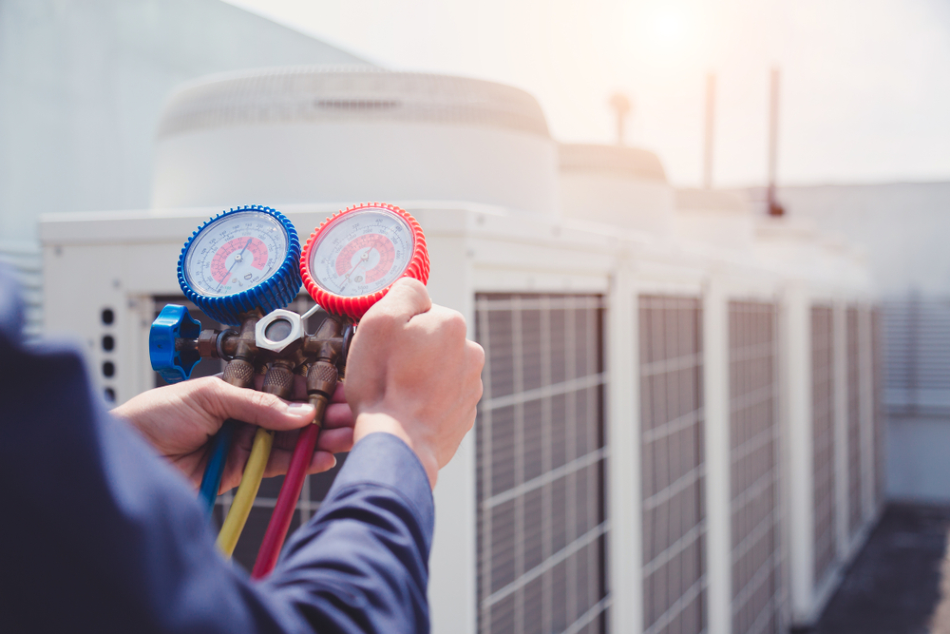Mar 24 2020
Heating and cooling of space is a standard requirement in a majority of the inhabited regions. Europe’s energy consumption on air conditioning is increasing, and this situation is likely to become worse due to the rising temperatures in different parts of the world.

Image Credit: A_stockphoto/Shutterstock.com
Particularly, during the summer period, popular air conditioners satisfy the growing cooling requirement in buildings. But air conditioners often utilize refrigerants that not only have a high environmental impact but also result in high consumption of electricity. So, what are the possibilities to decrease the energy demand to cool the buildings?
A team of researchers from the National Institute of Metrological Research (INRiM) and the Politecnico di Torino (SMaLL) has suggested a novel device that has the potential to create a cooling load without consuming electricity. This latest study has been published in the Science Advances journal.
Similar to more conventional cooling devices, this novel technology also manipulates liquid evaporation. But the main concept suggested by the Turin scientists is to utilize a combination of common salt and simple water rather than chemicals that can possibly impact the environment.
The novel device also reduces the environmental impact because it uses the concept of passive phenomena, that is, spontaneous processes like evaporation or capillarity, rather than compressors and pumps that demand both maintenance and energy.
Cooling by water evaporation has always been known. As an example, Nature makes use of sweat evaporation from the skin to cool down our body. However, this strategy is effective as long as air is not saturated with water vapour. Our idea was to come up with a low-cost technology capable to maximize the cooling effect regardless of the external water vapour conditions.
Matteo Alberghini, Study First Author and PhD Student, Department of Energy, Politecnico di Torino
Alberghini continued, “Instead of being exposed to air, pure water is in contact with an impermeable membrane that keeps separated from a highly concentrated salty solution. The membrane can be imagined as a porous sieve with pore size in the order of one-millionth of a meter. Owing to its water-repellent properties, our membrane liquid water does not pass through the membrane, whereas its vapour does.”
In this way, the fresh and salt water do not mix, while a constant water vapour flux occurs from one end of the membrane to the other. As a result, pure water gets cooled, with this effect being further amplified thanks to the presence of different evaporation stages.
Matteo Alberghini, Study First Author and PhD Student, Department of Energy, Politecnico di Torino
He further added, “Clearly, the salty water concentration will constantly decrease and the cooling effect will diminish over time; however, the difference in salinity between the two solutions can be continuously—and sustainably—restored using solar energy, as also demonstrated in another recent study from our group.”
The fascinating aspect of the proposed device lies in its modular design that is composed of cooling units, each having a thickness of few centimeters. These units can be stacked in sequence to boost the cooling effect in series, as it does with standard batteries.
In this manner, the cooling power can be adjusted finely based on individual requirements, potentially reaching a cooling capacity that is similar to those that are usually required for domestic purposes.
Moreover, to be transported inside the device, salt and water do not require various auxiliaries, including pumps. By contrast, the composition “moves” spontaneously because of the capillary effects of specific components, which, similar to kitchen paper, have also the ability to absorb and transport water against gravity.
Other technologies for passive cooling are also being tested in various labs and research centres worldwide, such as those based on infrared heat dissipation into the outer space—also known as radiative passive cooling.
Matteo Alberghini, Study First Author and PhD Student, Department of Energy, Politecnico di Torino
The scientists continued, “Those approaches, although promising and suitable for some applications, also present major limitations: the principle on which they are based may be ineffective in tropical climates and in general on very humid days, when, however, the need for conditioning would still be high; moreover, there is a theoretical limit for the maximum cooling power.”
“Our passive prototype, based instead on evaporative cooling between two aqueous solutions with different salinities, could overcome this limit, creating a useful effect independent of external humidity. Moreover, we could obtain an even higher cooling capacity in the future by increasing the concentration of the saline solution or by resorting to a more sophisticated modular design of the device,” the researchers further added.
Additionally, the simplicity of the device assembly together with the desired materials helps envision a relatively low production cost, in the order of a few euros for every cooling stage. Therefore, the device could prove effective for deploying in rural regions, where the potential lack of expert technicians can make it difficult to maintain and operate conventional cooling systems.
The new device may also be exploited for interesting applications in localities where water with high saline concentration is abundantly available, for example, coastal areas in the locality of massive desalination plants or neighboring salt mines and salt marshes.
At present, the technology cannot be used for instant commercial exploitation, and additional improvements (also subject to upcoming industrial collaborations or funding) are required. In this perspective, the new technology could be used in tandem with current and more conventional cooling systems to implement energy-saving plans effectively.